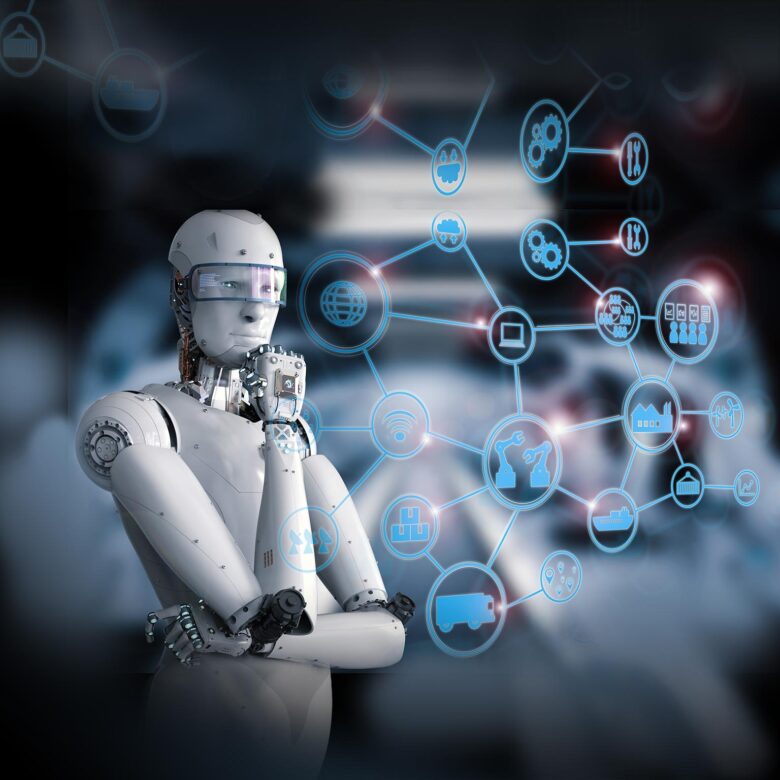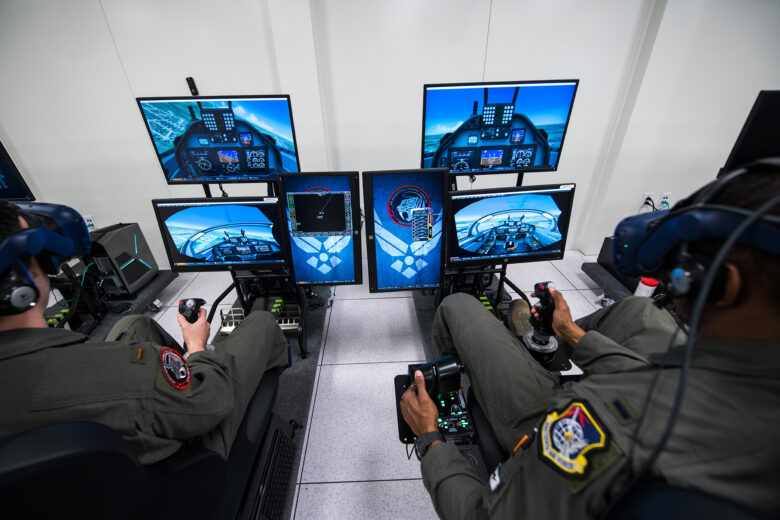The technology is pacing forward ever more rapidly, and many present-day companies understand that artificial intelligence is the key to many effective business operations. Even now, we see aerospace enterprises rely on AI-powered tools for testing, data analysis and more. But, artificial intelligence in the aerospace industry and engineering has far greater potential and, even now, already goes beyond data analysis.
Despite its rapid growth, this industry faces many challenges like human error and expensive labor costs. Soon enough, we should see artificial intelligence solve many of these pressing issues. Below is the list of AI-powered activities that should change the future of the aerospace industry.
1. Artificial Intelligence in Engineering & Product Design

Product design has already been revolutionized with the help of artificial intelligence. Today, rockets and their component parts are becoming ever more lightweight, and artificial intelligence in engineering plays a huge part in it. Now, product designers can create many versions of the same product and use AI to test these products’ features and functionality virtually. This opportunity streamlines the design stage, saving aerospace companies a lot of time, effort, and money.
Here, the main focus is on sustainability. Since artificial intelligence in aerospace engineering can help designers explore hundreds of options in a really short span of time, they can come up with lightweight and affordable products. Besides, artificial intelligence makes data transfer between different teams more transparent and can help everyone on board estimate the development costs. So, when it comes to the artificial intelligence future, product engineering and design definitely deserve the first spot on this list.
2. Artificial Intelligence to Boost Fuel Efficiency
Today, several promising companies are already creating rocket component parts on 3D printers. All of this is done to maximize fuel efficiency and minimize damage to our planet. Once again, artificial intelligence plays a major part in this process as it helps calculate fuel consumption on the rocket climb phase. This is the most energy-consuming part of the launch process that leaves no place for human error; and so, requires artificial intelligence on the fuel engineering stage.
Besides, some aerospace companies are already producing fuel obtained from plastic waste. This liquid-fuel technology is new in aerospace engineering, but its potential cannot be underestimated. Like every new technology, though, it may require additional testing and improvement. And that is where artificial intelligence in engineering comes in once again — it helps run multiple combinations and suggest even more effective ways of manufacturing eco-friendly, affordable rocket fuel.
3. Artificial Intelligence for Data Analytics

Companies like EOS Data Analytics and their partner Dragonfly Aerospace already rely on artificial intelligence for data analysis. As the number of satellites in the orbit grows, more companies should switch to AI tools for analyzing all obtained data. Observing the changes to our home planet should help prevent any harmful changes to the environment, preserving our natural resources and replenishing them whenever possible.
Besides, using artificial intelligence to analyze data from satellites should help quickly react to natural disasters like fires and floods. AI can also help plan and organize rescue missions; in fact, marines are already relying on satellite data for that. Last but not the least, satellite imagery analysis should soon change the face of commercial agriculture. AI tools, already used by EOS Data Analytics, can help farmers precisely forecast yield and provide detailed reports on specific land areas, up to a single private field.
4. Artificial Intelligence for Spacecraft Maintenance & Efficiency Analysis
While it is unlikely that artificial intelligence will replace aerospace technicians in the nearest future, this tech is already very useful for maintaining spacecraft. Artificial intelligence can help analyze any abnormal behavior of a spacecraft, its equipment, and separate component parts. Even now, aircraft have sensors that measure moisture, speed, air pressure, altitude, and a variety of other criteria. Artificial intelligence can combine and analyze these data to ensure safe, error-free flight performance. A sensor installed in a turbine analyzes rotation speed and can warn of any flaws in the system. All of this ensures uninterrupted spacecraft work, helps prevent failures, and avoid accidents.
5. Artificial Intelligence for Flight Training and Simulation

Important as artificial intelligence in engineering and maintenance may be, AI simulations will prove most useful for training pilots. Artificial intelligence can run highly realistic flight simulations where pilots will get a chance to polish their skills — without real danger to themselves or the spacecraft. More importantly, artificial intelligence can analyze obtained training data to see each pilot’s weaknesses and develop a customized training plan tailored for every pilot. This feature has undeniable advantages over traditional training programs and should become the future of manned space missions. Sooner or later, some missions may even become unmanned — even though, right now, it is too early to say that AI in aerospace will replace real pilots.
6. Artificial Intelligence for Threat Identification
AI can precisely identify threats with geospatial signal processing. Both machine vision and machine learning should be used to process data from satellites and allow pilots to make informed decisions based on any current threats in the area. While this tech will probably be in high demand on military projects, it should eventually find its way into commercial and civil niches. The most important benefit of threat identification with AI is to give pilots 100% (or as close as it gets) situation awareness, limiting all risks to a possible minimum.
No doubt, it may take some time before all of these trends become commonplace. Still, the benefits of artificial intelligence in the aerospace niche are undeniable, and more companies are embracing this change even now. Quite likely, aerospace leaders will soon find more useful AI tech applications — something we have not thought about yet.

